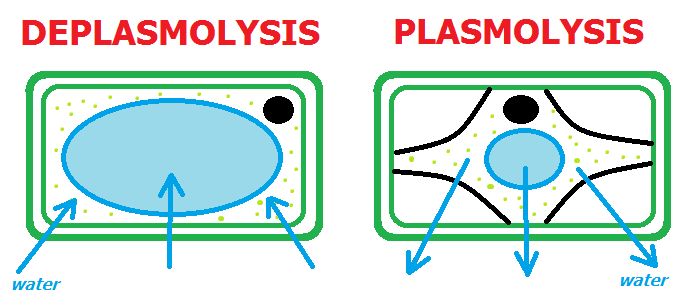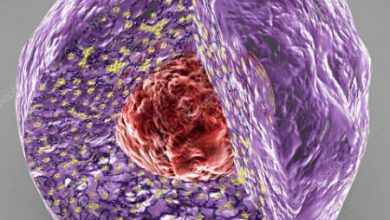Importance of Plasmolysis and Deplamolysis
The shrinkage of protoplasm due to exosmosis of water is called plasmolysis. Plasmolysis refers to the separation of living protoplast of a plant cell from the cell wall when the cell is immersed in a hypertonic solution (solution with more negative or high solute potential). The hypertonic solution will withdraw water from the cell and the plasma membrane will be pulled away from the cell wall.
Importance of Plasmolysis
The plasmolytic method is an indirect measure to determine the rate of transfer of a solute from the plasmolyzing solution into the cell. Because the rate of de-plasmolysis depends on the rate at which solute in a plasmolyzing solution enters a cell, therefore by making microscopic measurements from time to time of the increasing volume of the protoplast during deplasmolysis, the rate of transfer of a solute from the plasmolyzing solution into the cell can be measured.
But this is an indirect measure because the entry of solute particles depends upon the movement of water molecules. However, with one or another modification of the plasmolytic method, the permeation of hundreds of different chemical compounds has been investigated.
Model for Plasmolysis
The phenomenon of plasmolysis can be demonstrated with the help of a simple experiment. If we place a thread of filamentous alga, or an entire leaf of the aquatic plants such as Elodea, or a thinly sliced section of tissue from an herbaceous plant, or a layer of epidermal cells peeled from a leaf, in a hypertonic solution (a solution whose solute concentration is higher than the total solute concentration in the cell sap solution) such as glucose or sucrose solution, or a salt solution (plasmolyzing solution), there is a net movement of water from the cell into the solution due to osmosis.
The water is first lost from the cytoplasm and then from the vacuole through tonoplast. The cell loses its pressure potential (turgor pressure), the vacuole shrinks, the volume of protoplast decreases, and the protoplast ceases to exert any pressure against the cell wall The final outcome is the pulling away of plasma membrane from the cell wall.
The space between the cell wall and plasma membrane becomes filled with a plasmolyzing solution. Water will continue to leave the protoplast until its contents are of the same water ‘potential as the external solution. No further shrinkage then occurs.
This process is called plasmolysis and the cell is said to be plasmolyzed. The point at which the plasmolysis is just about to happen, i. e., the plasma membrane starts pulling away from the cell wall, which is called incipient plasmolysis. At incipient plasmolysis the protoplast has just ceased to exert any pressure against the cell wall, so the cell is flaccid.
Deplasmolysis
The process of plasmolysis is usually reversible without permanent damage to the cell. If a plasmolyzed cell remains in the plasmolyzing solution, it may recover from plasmolysis.
Because when the water potential of the external solution becomes higher the water along with the solutes starts moving into the vacuole. As a result, the volume of the protoplast increases and t starts exerting pressure on the cell wall so the cell becomes turgid and regains its normal condition.
Such recovery of a plasmolyzed cell to its normal condition is known as Deplasmolysis. The rate of Deplasmolysis depends on the rate at which a solute permeates into the vacuole. The more rapid is the rate of permeation of the solute, the more rapidly the de-plasmolysis take place.








